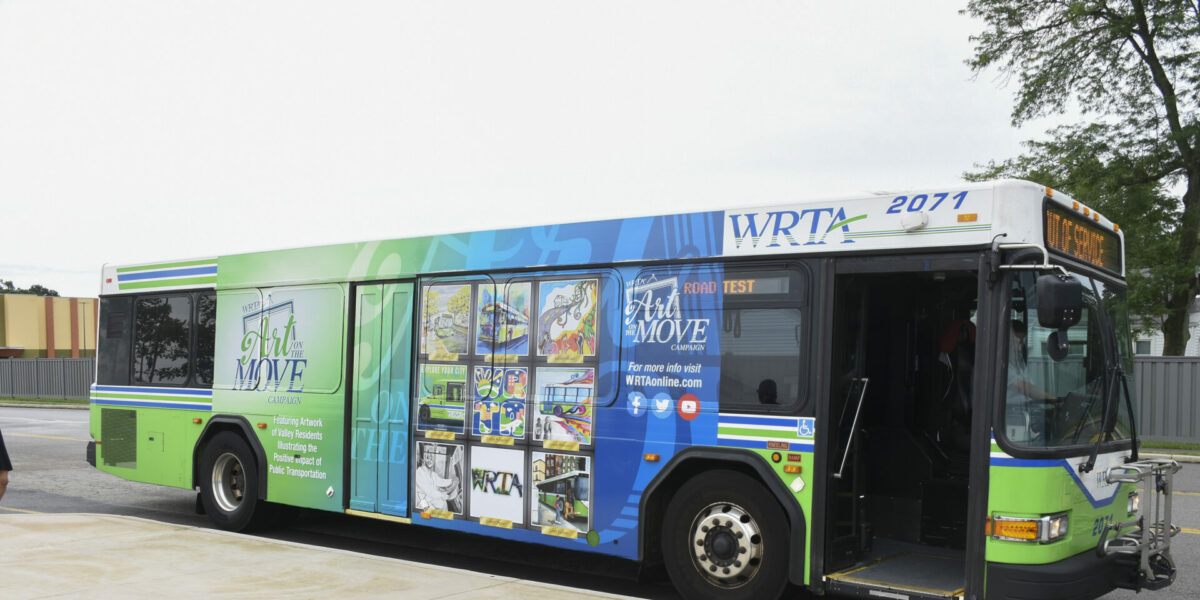Reliable Transit Advertising Philippines to Grow Your Audience
Reliable Transit Advertising Philippines to Grow Your Audience
Blog Article
Understanding the Duty of Transit Advertising And Marketing in Enhancing Brand Name Exposure and Customer Engagement
Transit marketing has actually become an essential aspect in the advertising and marketing landscape, supplying one-of-a-kind possibilities for brands to elevate their visibility and involve consumers effectively. With the ability to get to a diverse and captive target market during their everyday commutes, these advertising methods are not merely about exposure; they have to do with creating meaningful connections with prospective clients. As we explore the complex benefits and ingenious methods within transportation advertising and marketing, it comes to be vital to take into consideration just how these components collectively influence customer assumption and behavior, questioning concerning their lasting effect on brand name commitment.
Interpretation of Transportation Advertising
Transportation advertising describes the technique of promoting items, services, or brands via advertisements put in and around public transport systems. This type of advertising and marketing includes a selection of placements, including posters on buses and trains, digital displays at transportation stations, and covers on the outside of vehicles. It intends to get to a diverse audience, exploiting on the high foot website traffic linked with public transit.
Transit advertising and marketing is strategically positioned to catch the attention of commuters, that frequently invest considerable time traveling or waiting. By incorporating advertisements right into the day-to-day regimens of individuals, brands can create an enduring impact and foster brand acknowledgment. The medium is particularly reliable in metropolitan settings, where public transport is a main setting of travel.
In addition, transportation advertising and marketing can help with localized targeting, allowing businesses to reach certain demographics based upon transit courses and terminal areas. As urban populaces grow and the usage of public transportation rises, this marketing approach has actually acquired importance as an important component of incorporated marketing techniques. The dynamic nature of transit marketing, combined with its capability to involve consumers in a restricted environment, emphasizes its value in contemporary marketing techniques.
Benefits of Transportation Advertising
The efficiency of transit advertising exists in its capacity to provide a wide range of advantages to brand names looking for to boost exposure and involvement. One of the main advantages is the substantial reach it offers; transportation advertisements can successfully target varied demographics across city locations, getting to both pedestrians and commuters alike. This wide exposure significantly increases brand recognition.
Another benefit is the high frequency of perceptions. As transportation lorries take a trip along well-known paths and stop at several places, they develop repetitive exposure that reinforces brand name messages. This frequency fosters familiarity, which is important in consumer decision-making.
Transit advertising is also cost-effective compared to various other media systems. Given its large reach and potential for high impressions, brand names frequently experience a reduced expense per thousand impressions (CPM), optimizing their marketing budget.
Moreover, transit ads can produce a feeling of neighborhood connection. By aligning with regional transit systems, brand names can reverberate with local target markets and cultivate a sense of regional satisfaction. This local approach boosts brand name commitment and involvement, making transit advertising an engaging option for organizations aiming to solidify their presence in the market.

Reliable Methods for Transit Projects
To take full advantage of the effect of transit projects, brands should leverage strategic planning and implementation customized to their target audience. Initially, recognizing the demographic characteristics of the audience using public transit is crucial. This permits brand names to develop tailored messaging that resonates with potential customers.
Following, choosing the ideal transportation tools is essential. Whether utilizing bus covers, subway posters, or electronic screens, each tool has unique benefits that can improve visibility. For example, vivid visuals on bus covers can stand out, while digital ads can be upgraded frequently to reflect timely promotions.
Moreover, incorporating a natural branding my website strategy across transportation platforms guarantees consistency and enhances the brand name's identity. Using attractive layouts and remarkable taglines will enhance brand name recall amongst travelers.
By using these strategies, brands can efficiently harness the potential of transit marketing, cultivating greater awareness and link with their target audience. Eventually, a well-executed transportation project can drive significant growth in brand name visibility and consumer engagement.

Measuring Impact and Interaction
In examining the efficiency of transportation marketing campaigns, precise measurement of effect and engagement is essential for brand names seeking to maximize their advertising techniques. Metrics such as reach, frequency, and impacts supply foundational data to examine pop over to these guys visibility. Analyzing these variables helps identify how many possible customers are exposed to the advertisements during their day-to-day commutes.
Engagement can be more gauged through consumer communications, such as website web traffic, social networks discusses, and straight responses to calls-to-action included in the ads. Utilizing tools like QR codes or one-of-a-kind URLs can promote monitoring of customer actions straight linked to transit projects. Surveys and comments mechanisms additionally function as useful techniques to collect qualitative information on consumer perceptions and recall of the advertisement.
In addition, advanced analytics and attribution versions pop over to this site can associate transportation exposure with subsequent investing in behavior, using insights into the return on investment. By employing a comprehensive method that integrates qualitative and measurable steps, brand names can develop a nuanced understanding of their transportation advertising and marketing impact. Ultimately, this data-driven approach makes it possible for brand names to refine their campaigns, ensuring they resonate properly with target market and improve general brand name exposure.
Study of Effective Campaigns
Successful transit ad campaign work as compelling examples of just how efficient techniques can boost brand presence and involvement. Transit Advertising Philippines. One notable case is the "I Love New york city" project, which transformed the city's picture and brought in countless travelers. By utilizing train ads, signboards, and bus covers, the project produced a strong, cohesive brand identity, causing a substantial uptick in tourism and local business patronage
Another excellent project is Coca-Cola's "Share a Coke" initiative, which leveraged transportation advertising and marketing to individualize the brand name experience. By including prominent names on advertising materials throughout various transit platforms, Coca-Cola promoted a deeper emotional connection with customers, urging them to share their experiences on social networks.
Additionally, the "Got Milk?" project effectively made use of public transport ads to get to a broad target market, enhancing the message of the importance of milk in a well balanced diet plan. The campaign saw a measurable rise in milk consumption in target demographics.
These study illustrate that when executed thoughtfully, transportation marketing can considerably boost brand presence, foster customer engagement, and drive measurable results, showing its vital function in contemporary advertising and marketing techniques. - Transit Advertising Philippines
Verdict
Finally, transportation advertising and marketing serves as an essential tool for boosting brand exposure and cultivating consumer engagement. By utilizing strategically placed promotions within public transport systems, brands can efficiently reach varied target markets and strengthen recognition through regular direct exposure. The application of targeted messaging and ingenious approaches better amplifies the influence of transportation projects. Inevitably, the capacity to measure involvement and assess successful study highlights the efficiency of transit advertising in driving brand commitment and consumer interactions.
Transit marketing has arised as a crucial element in the advertising and marketing landscape, using special chances for brands to raise their exposure and involve consumers efficiently.In addition, transportation advertising can promote localized targeting, permitting companies to get to particular demographics based on transportation courses and station areas.In evaluating the effectiveness of transportation marketing campaigns, exact dimension of influence and engagement is important for brand names seeking to enhance their marketing techniques.Effective transit advertising and marketing projects serve as compelling examples of exactly how reliable techniques can boost brand exposure and interaction.In verdict, transit marketing serves as a crucial device for improving brand exposure and fostering consumer interaction.
Report this page